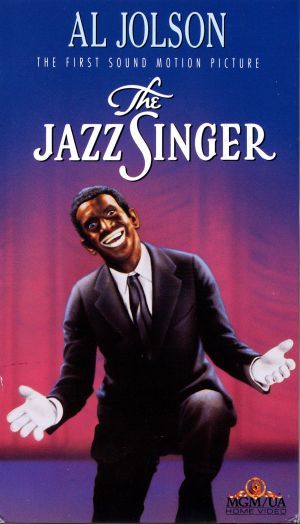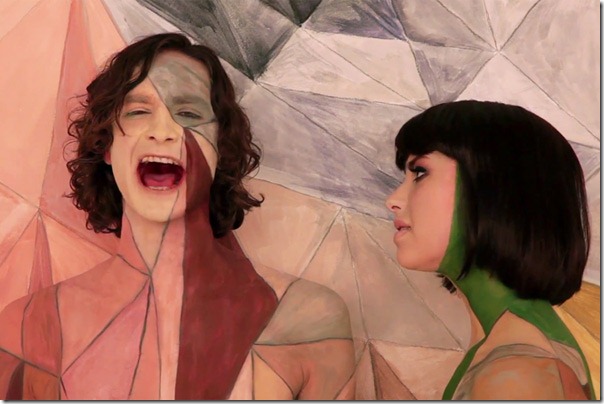Essay 1: Digital Media Convergence
Music
Video – All Aboard the Convergence Carriage!
“Technologies
can often have such profound impacts that we even define historical epochs on
the basis of technological distinctions” (Winston, 1995). This
assertion, from academic Brian Winston, embodies a quintessential aspect of the
rapid acceleration of technological advancement that has redefined the
contemporary Western World as, ultimately, a ‘digital age’. Consequently, the enormous
impact this radical development has had upon the societal fabric of media
communication and its associated mediums has become evident, with the essence
of such change primarily falling under the juggernaut umbrella term ‘digital
media convergence’. The technologically cohesive quality modern media platforms
now possess enable audiences to obtain flexible media information
instantaneously through access to the world of online music video. In my
examination of this phenomenon, I shall discuss both the influence of technological
convergence upon the significance of music video and, its potent relationship to
popular cultural memory.
 So
what exactly is digital media convergence anyway?
So
what exactly is digital media convergence anyway?In order to fully grasp the societal impact of digital media convergence, the multi-faceted media phenomenon that dominates our modern society, we must look at its fundamental definition. Dwyer’s definition of media convergence refers to “the process whereby new technologies are accommodated by existing media and communication industries and cultures” (Dwyer, 2010). In other words, convergence refers to the elimination of barriers between different media ‘tools’ and a cohesive combination of the technologies that heavily influence our lifestyles. A keystone example is the Apple ‘iPhone’, which is exemplar of this notion. The iPhone, and similarly its smartphone ‘siblings’ have redefined everyday access to media through both portability of communicative content, and the instant availability of media product, thus creating “a new technical scenario in which information and communication can be handled in more flexible ways” (Thompson, 1999).
 An example of paramount significance is our
everyday, around-the-clock access to the music video that was once restricted to,
and synonymous with the singular media facet, Television. In principle, if you
own an iPhone, you own the ability to access music videos any time of day, in
almost any location. This has revolutionised not only how music videos are
accessed, but additionally the significance of music video to its targeted
audience. Society’s embrace of the versatility of the iPhone and its related
smartphones buttress Dwyer’s notion that “tradition
media have been so keen to expand into online and mobile media” (Dwyer,
2010), and illuminates why music video has exploded as a product of the online
world, and thus been definitively separated from Television’s realm.
An example of paramount significance is our
everyday, around-the-clock access to the music video that was once restricted to,
and synonymous with the singular media facet, Television. In principle, if you
own an iPhone, you own the ability to access music videos any time of day, in
almost any location. This has revolutionised not only how music videos are
accessed, but additionally the significance of music video to its targeted
audience. Society’s embrace of the versatility of the iPhone and its related
smartphones buttress Dwyer’s notion that “tradition
media have been so keen to expand into online and mobile media” (Dwyer,
2010), and illuminates why music video has exploded as a product of the online
world, and thus been definitively separated from Television’s realm.
YouTube:
King of Convergence
In examining the shift of music video from strictly televised content to a symbolic form that can be accessed from a multitude of media platforms, one cannot ignore the gargantuan influence of the video-sharing website, YouTube. Just how gargantuan? Well, according to Orgad’s recent study, “Enthusiastic forecasts suggest an explosion in demand with more than half a billion customers subscribing to video services on their mobile phones by 2011.” Pretty up there. Formed in 2005, the website has since revolutionised both the definition of music video, and the rigid framework of audience-access that once restricted its availability. Millions of people use YouTube every day for their music video needs, drawn by the appeal of its instantaneous provision of content and the ease with which these videos are accessed. As Hilderbrand asserts, “YouTube has become the go-to website for finding topical and obscure streaming video clips” (Hilderbrand, 2007). Dissimilar to the now low-rating music video programs on television, such as Rage and the former Video Hits, popular YouTube clips have received hundreds of millions of hits, for example Justin Bieber’s 2010 hit ‘Baby’ with 774,244,644 views, and Shakira’s 2010 hit ‘Waka Waka’, a tribute to the 2012 Soccer World Cup that received 489,717,176 views.
In examining the shift of music video from strictly televised content to a symbolic form that can be accessed from a multitude of media platforms, one cannot ignore the gargantuan influence of the video-sharing website, YouTube. Just how gargantuan? Well, according to Orgad’s recent study, “Enthusiastic forecasts suggest an explosion in demand with more than half a billion customers subscribing to video services on their mobile phones by 2011.” Pretty up there. Formed in 2005, the website has since revolutionised both the definition of music video, and the rigid framework of audience-access that once restricted its availability. Millions of people use YouTube every day for their music video needs, drawn by the appeal of its instantaneous provision of content and the ease with which these videos are accessed. As Hilderbrand asserts, “YouTube has become the go-to website for finding topical and obscure streaming video clips” (Hilderbrand, 2007). Dissimilar to the now low-rating music video programs on television, such as Rage and the former Video Hits, popular YouTube clips have received hundreds of millions of hits, for example Justin Bieber’s 2010 hit ‘Baby’ with 774,244,644 views, and Shakira’s 2010 hit ‘Waka Waka’, a tribute to the 2012 Soccer World Cup that received 489,717,176 views.
 These staggering statistics, suggested only to rise,
are indicative of both music videos’ success following a convergence with the
online medium, and Hilderbrand’s assertion that “at the forefront of web video, YouTube has been called “viral”, “revolutionary”,
and a “phenomenon”” (Hilderbrand, 2007). Music videos’ humble beginnings in
1927 with “The Jazz Singer” were a tentative cohesion of an audio and visual
entertainment that would, nearly a century later, create an explosive market
for music and film defined by the convergence of this content onto an online
and portable medium. In their historical
context, the significance of these early productions was not yet evident,
though today as digital natives accustomed to giant platforms such as YouTube,
their meaning becomes all too clear.
These staggering statistics, suggested only to rise,
are indicative of both music videos’ success following a convergence with the
online medium, and Hilderbrand’s assertion that “at the forefront of web video, YouTube has been called “viral”, “revolutionary”,
and a “phenomenon”” (Hilderbrand, 2007). Music videos’ humble beginnings in
1927 with “The Jazz Singer” were a tentative cohesion of an audio and visual
entertainment that would, nearly a century later, create an explosive market
for music and film defined by the convergence of this content onto an online
and portable medium. In their historical
context, the significance of these early productions was not yet evident,
though today as digital natives accustomed to giant platforms such as YouTube,
their meaning becomes all too clear.
What influence has online music video had upon its audiences?
“It’s not about the video. It’s about creating a
community around the video.” (Hilderbrand, 2007). In essence, this assertion
sums it up. The significance of easily accessed music video lies in the popular
cultural memory archive that these videos contribute to. The combination of
audio and visual entertainment allows artists to directly and emotively
communicate with their audience, not only through the significance of lyrics,
but with a physically viewable message. As an example, I will investigate Gotye
and Kimbra’s 2011 poignant international success ‘Somebody That I Used to Know’ (http://www.youtube.com/watch?v=8UVNT4wvIGY&feature=relmfu),
focusing on the audio message communicated through an intimate connection with
the singers. Thanks to media convergence, for the contemporary audience, the
originality of this video will resonate.
The video, which has received 309,957,664 views,
depicts the heartache experienced post-separation of a man and woman. The
nakedness of the two in the video symbolises the direct emotive connection made
between the singers and the audience absorbing the visual image, a connection
made through an invitation to the viewers to appreciate their vulnerability.
The constant eye-contact held while singing the melancholy lyrics “Now you’re
just somebody that I used to know” is exemplar of music video’s ability to
resinate within our cultural memory, “a
concept that suggests the idiosyncratic ways that personal experience, popular
culture, and historical narrative intersect” (Hilderbrand, 2007).
The convergence of digital media, exploding the accessibility and relevance of
music video, has created a popular cultural memory never before experienced in
relation to audio visual content.
In conclusion, the impact of digital media
convergence upon the music video industry has been enormous. Whilst not only
propelling the symbolic form of music video into unprecedented areas of
popularity, such convergence has also allowed artists to communicate emotively
with their audiences with greater success, thus redefining our relationship
with both music and media.
Bibliography:
- Dwyer.T
(2010) “Introduction”, Media Convergence, McGraw Hal, Berkshire, pp. 1-23
- Hilderbrand,
L (2007), “YouTube: Where Cultural Memory and Copyright Converge”, Film Quarterly, Volume 61
- Orgad,
Shani (2009) “Mobile TV: Old and New in the Construction of an Emergent
Technology”, Convergence: The International
Journal of Research Into New Media Technologies, Sage
- Thompson,
John (1999) “The Media and Modernity” in Hugh Mackay and Jim Sullivan (eds) The Media Reader: Continuity and
Transformation, Sage, London, pp. 12-27
- Winston,
Brian (1995) “How are media born and developed?” in John Dowling, Ali
Mohammadi, Annabelle Sreberny – Mohammadi (eds) Questioning the Media: A critical introduction, London, Sage, pp.
54-74
Ellen Jephcott 42857937



No comments:
Post a Comment